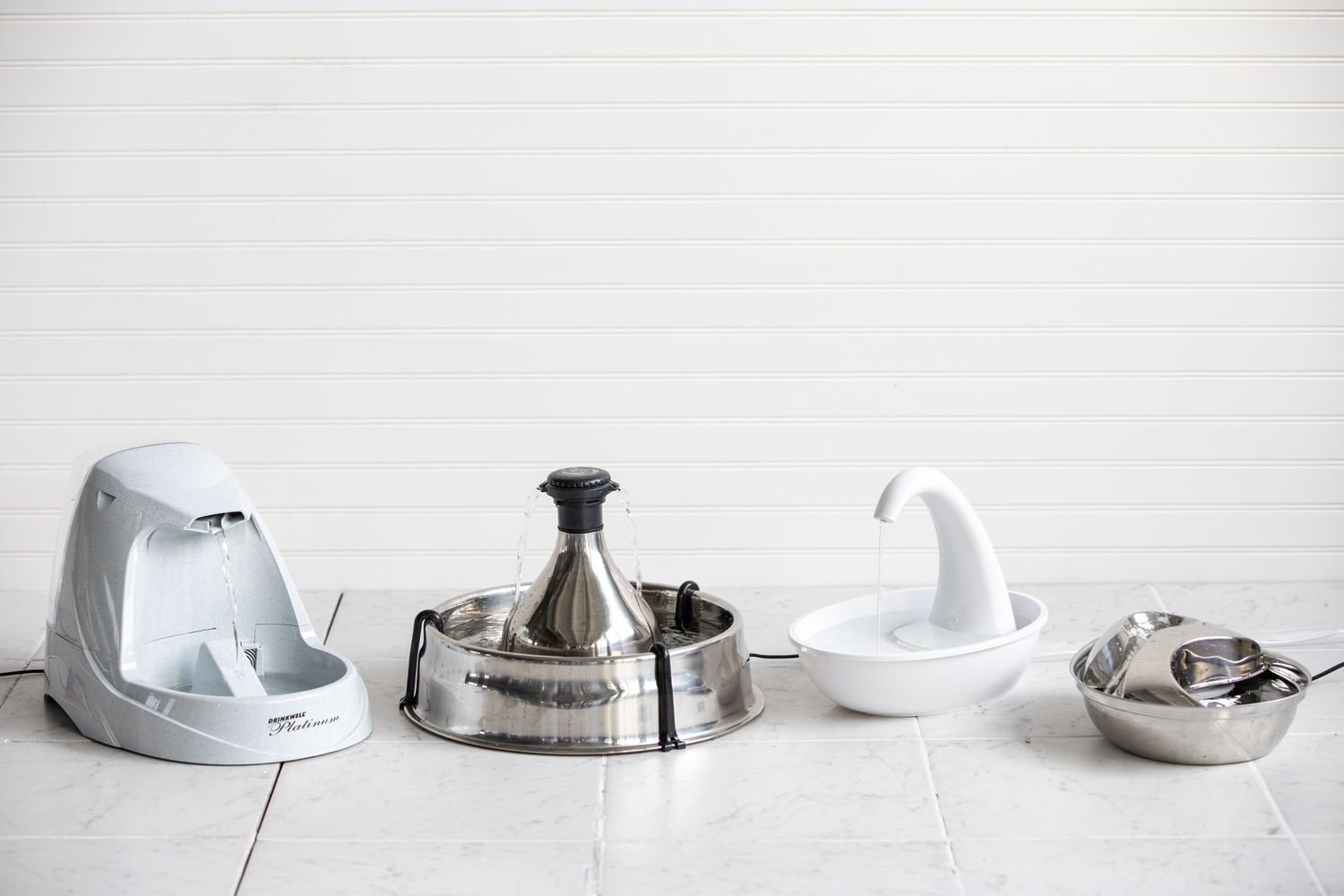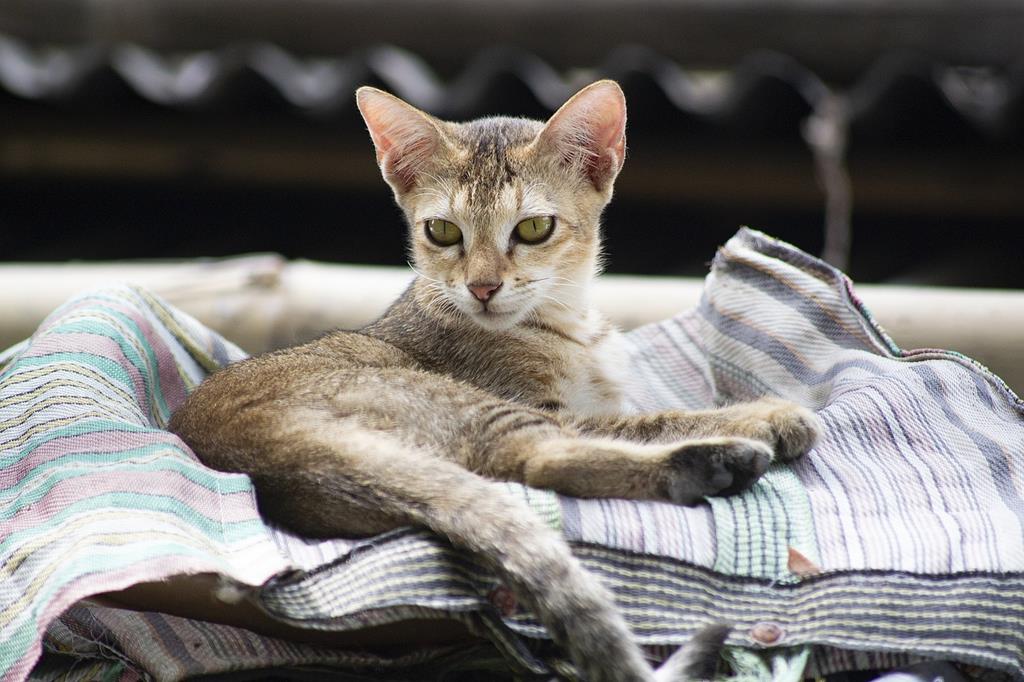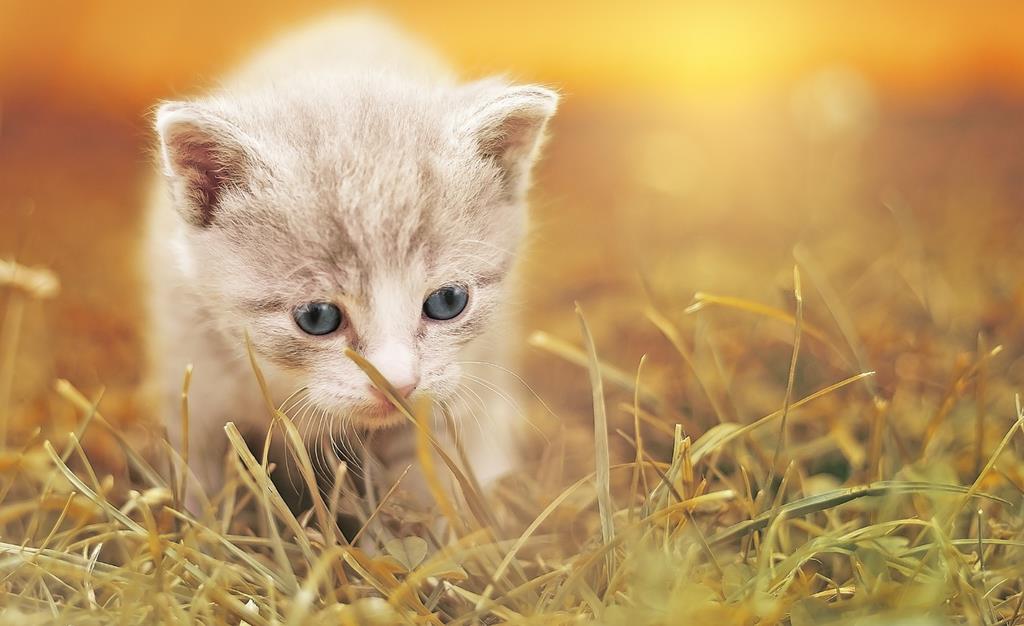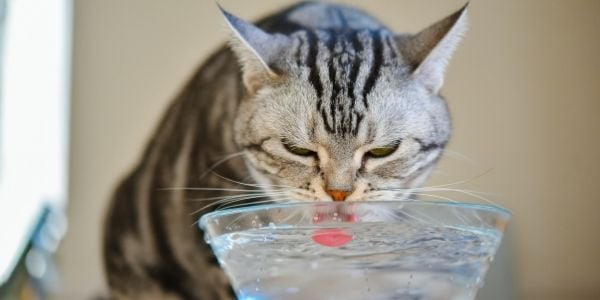Ceramic cat water fountains offer aesthetic appeal, while stainless steel options boast durability and ease of cleaning. Choosing the right material depends on your priorities: style or practicality.
Keeping your feline hydrated is crucial for their health, and a cat water fountain can make this task simpler and more appealing for your pet. Cats often prefer running water, as it mimics their instincts for fresher, cleaner sources. A ceramic fountain may blend better with home decor and is less prone to causing allergic reactions.
On the other hand, stainless steel fountains resist bacteria growth and withstand rough handling, making them ideal for vigorous use. Finding the perfect balance between design and functionality is key for pet owners seeking to ensure their cats have constant access to fresh water. With various styles and models available, it’s important to assess aspects like capacity, filtration system, and ease of maintenance when making your selection.
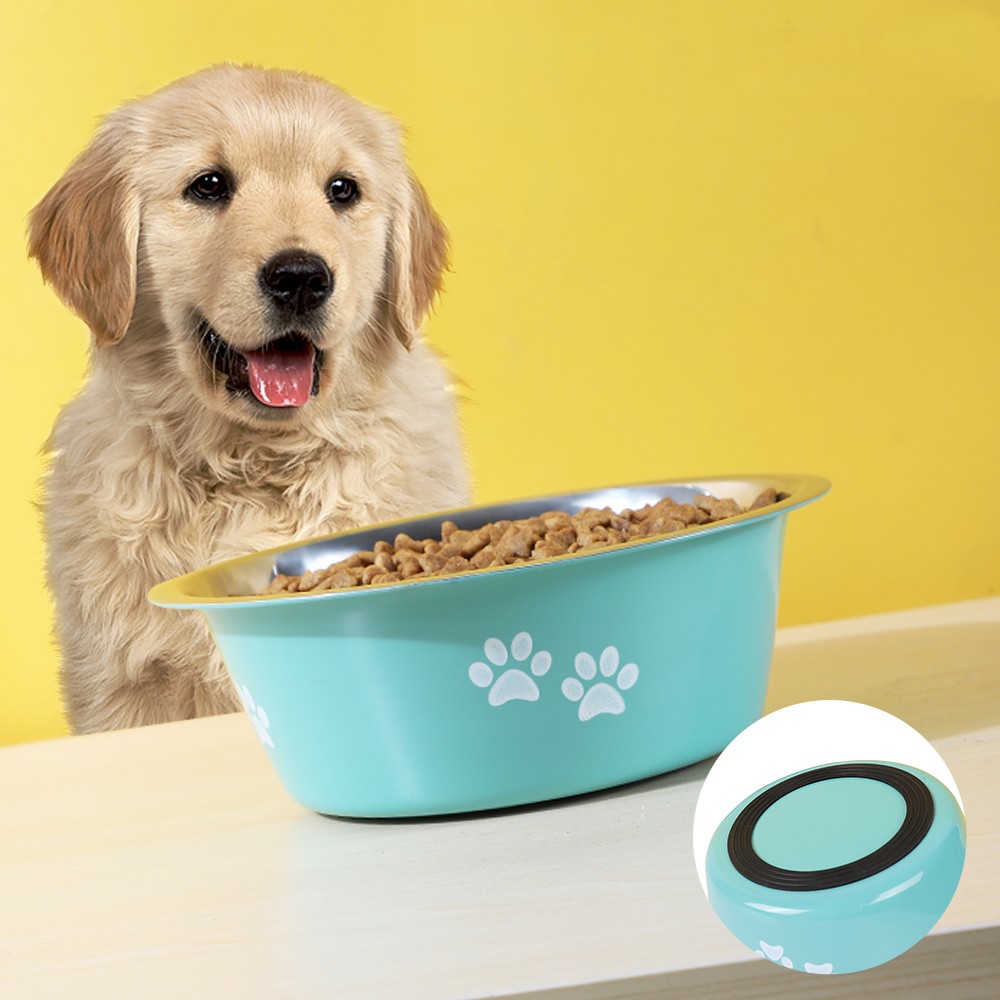
Credit: www.nicetystainless.com
Comparing Materials For Cat Water Fountains
When choosing a water fountain for your feline friend, material matters. Cat water fountains come in various types, but ceramic and stainless steel options stand out for their quality and durability. Understanding the differences can help you make the best choice for your pet.
Ceramic Features & Lifespan
Ceramic water fountains boast a classic look. Their glazed surfaces are non-porous and easy to clean. The smooth texture prevents bacteria from hiding and growing between crevices, thus ensuring a cleaner drinking experience for your cat.
Ceramic options often come in diverse designs and colors, fitting well into various home decors. Though ceramic fountains can be heavy and fragile, they have a longer lifespan when maintained properly. It’s key to handle these with care to avoid chips and cracks that can harbor bacteria or cause leaks.
Stainless Steel Advantages & Durability
Stainless steel cat water fountains are known for their high strength and durability. They withstand drops and mishandling better than ceramic models, making them ideal for lively pets. The material is inherently resistant to rust and staining, contributing to a longer-lasting product.
Stainless steel features a modern look that stays sleek over time and is incredibly straightforward to clean, even in the dishwasher. This material’s non-porous nature means less opportunity for bacteria growth. Notably, stainless steel fountains are typically lighter in weight compared to ceramic, facilitating easier movement and handling.
| Feature | Ceramic | Stainless Steel |
|---|---|---|
| Look and Style | Classic, varies in colors | Modern, metallic finish |
| Maintenance | Handle with care, easy to clean | Resilient, dishwasher safe |
| Bacteria Resistance | Low porosity reduces bacterial growth | Non-porous, prevents bacteria buildup |
| Durability | Long-lasting with proper care | Highly durable, resists damage |
| Weight | Heavier, stable | Lightweight, portable |
:strip_icc()/Cat-Water-Fountains-group-Leticia-Almeida-photo-03-8d377c28b6c044aca064205c9ab66f0f.jpg)
Credit: www.thesprucepets.com
Health Considerations For Cats
When it comes to furry friends, their health always takes top priority. Choosing between a ceramic or stainless steel cat water fountain isn’t just about style. It’s about keeping them healthy and hydrated. Let’s dive into the health considerations every cat owner should know.
Hygiene And Bacterial Growth
Keeping a cat’s drinking fountain clean is crucial to prevent illness. Ceramic and stainless steel options both offer advantages. Here’s how they compare:
- Ceramic:
- Smoother surface, less prone to scratches.
- Scratches can harbor bacteria.
- Regular cleaning required to prevent biofilm.
- Stainless Steel:
- Naturally resistant to bacteria.
- Durable and less likely to crack or chip.
- Frequent cleaning can maintain its hygiene.
Tip: Pick fountains with fewer crevices to minimize bacteria buildup.
Allergies And Material Safety
Cats are sensitive creatures, and materials matter. Here’s how the two materials measure up in terms of safety for our sensitive companions:
| Material | Allergies | Safety |
|---|---|---|
| Ceramic | Rarely cause allergies | Lead-free glaze is a must |
| Stainless Steel | Very low risk of allergies | Non-toxic and chemical-free |
Note: Always check for quality and ensure there is no harmful coating on either type.
Aesthetics And Design
Choosing a cat water fountain often involves more than practicality. The style of the fountain can complement your home decor and even please your cat’s discerning taste. Ceramic and stainless steel offer unique aesthetics. Let’s delve into how each matches home interiors and cat preferences.
Matching Home Decor
Ceramic cat water fountains bring a touch of elegance. They come in various colors and patterns. This makes it easy to find one that fits your interior design. Stainless steel fountains offer a modern look. They have a shiny finish that looks clean and sophisticated. Both materials have their charm and can easily blend in or stand out, depending on the style chosen.
Appeal To Feline Preferences
Not only does the look of the fountain matter to you, but it might also to your cat. Cats have a natural attraction to running water. It’s why they often prefer a fountain over a still water bowl. Ceramic fountains are generally quieter than stainless steel, which might be more appealing to sensitive felines. The cool touch of stainless steel can be refreshing on a hot day, possibly encouraging your cat to drink more. Understanding your cat’s preferences is key to choosing the right fountain.
Maintenance And Cleaning
Welcome to the essential guide on the maintenance and cleaning of cat water fountains. Keeping your pet’s water fountain clean is not just about hygiene; it’s also about ensuring your furry friend stays interested in drinking water. Today, we’ll compare the maintenance demands of both ceramic and stainless steel fountains, focusing on ease of cleaning and durability.
Ease Of Disassembly
Maintaining a clean water source for your cat is pivotal. The ease with which you can take apart a water fountain significantly affects the cleaning process.
- Ceramic water fountains often come in fewer pieces. This makes them easier to disassemble.
- Stainless steel fountains may have more components. It can take a bit more time to take them apart for cleaning.
Dishwasher Safety
Dishwasher safety is a key factor for convenient fountain maintenance.
| Material | Dishwasher Safe |
|---|---|
| Ceramic | Yes, but check manufacturer’s instructions |
| Stainless Steel | Yes, typically more compatible |
While both types of fountains can go in the dishwasher, stainless steel options generally endure the process better, with less risk of chipping or damage. Always consult the care guide for your specific model before placing any fountain parts in the dishwasher.
Cost Analysis
Understanding the cost factors of cat water fountains is crucial. These factors include upfront prices and long-term expenses. People often compare ceramic and stainless steel options. Let’s dive into the cost analysis of each type!
Initial Investment
Ceramic cat water fountains come with a higher price tag. Here’s a quick overview of what you’ll spend upfront:
- Elegant designs – more expensive materials lead to higher costs
- Unique styles – custom detailing can drive up the price
In contrast, stainless steel fountains are often more budget-friendly:
- Durable construction – less intricate manufacturing keeps costs down
- Simpler designs – often results in lower initial prices
Long-term Value
When looking at the long-term value, factors that impact cost over time come into play.
- Replacement filters – both types require these, affecting long-term costs
- Durability – stainless steel often outlasts ceramic, which may crack
Consider also maintenance efforts:
- Cleaning ease – stainless steel is typically easier to clean, saving time and money
- Resistance to bacteria – stainless steel is less porous, leading to fewer replacements due to hygiene concerns
Real-life User Experiences
Welcome to a world where the thirst-quenching needs of your feline friends take center stage, and deciding between ceramic and stainless steel water fountains becomes clearer with real-life user experiences. Cat owners share personal insights, ensuring you’re equipped with the knowledge to make the best choice for your pet’s hydration.
Customer Reviews
Feline families share their stories regarding the use of cat water fountains. Let’s explore their feedback:
- Ceramic fans cite style and ease of cleaning as major plus points.
- Stainless steel supporters mention durability and resilience against scratches.
- Many observe a preference by cats for running water from either type of fountain.
- Some note frequent filter changes are needed regardless of the material.
Table 1 showcases a summary of customer feedback:
| Material | Pros | Cons |
|---|---|---|
| Ceramic | Attractive design, Easy to cleanse | Heavier, Fragile |
| Stainless Steel | Durable, Scratch-resistant | Less decorative, May show water spots |
Veterinary Recommendations
Experts in pet health weigh in on the discussion. Vets recommend considering:
- The cat’s health, especially chin acne, which might react to plastic.
- Maintenance requirements such as ease of cleaning to prevent bacteria growth.
- The material’s impact on water taste, as some cats are sensitive to this.
Veterinarians express a slight preference toward stainless steel for its hygienic benefits. Still, they stress the importance of individual cat needs and owner lifestyle fit. They endorse the idea that a well-hydrated cat is a happy cat, whether from ceramic or steel.
Final Verdict
When picking the perfect water fountain, the choice comes down to what suits your furry friend best. Let’s sum up the journey, weigh the advantages and disadvantages, and decide on the ideal option for your cat.
Pros And Cons Recap
Choosing between ceramic and stainless steel cat water fountains involves looking at the pros and cons of each material.
| Ceramic Fountains | Stainless Steel Fountains |
|---|---|
|
|
|
|
Best Pick For Your Cat
After considering both types of fountains, it’s clear each has unique benefits for different needs.
Ceramic fountains are ideal if style and water coolness are top priorities. Stainless steel fountains shine for durability and hygiene. Your best pick directly aligns with what your cat needs and your preferences for maintenance.
Still undecided? If your cat has a history of acne or allergies, stainless steel is the safer bet. For homes focused on integrating pet supplies with elegance, ceramic stands out.
Most importantly, both ensure a fresh, flowing source of water – a cornerstone for your cat’s health. So, take the leap and choose the fountain that will make your cat’s whiskers twitch with joy!

Credit: www.uahpet.com
Frequently Asked Questions Of Cat Water Fountain Ceramic Vs Stainless Steel
Which Is Better For Cats, Ceramic Or Stainless Steel Fountains?
Ceramic cat water fountains are elegant and can complement home décor. However, stainless steel fountains are more durable and resistant to scratches.
What Are The Benefits Of Ceramic Cat Water Fountains?
Ceramic fountains offer a stylish design and keep the water cool. They’re also quieter, which may be preferable for skittish cats.
Are Stainless Steel Water Fountains Safer For Cats?
Stainless steel water fountains are considered safer as they don’t harbor bacteria like plastics. They are also easier to clean and more hygienic.
How Often Should I Clean My Cat’s Water Fountain?
Regardless of material, it’s best to clean your cat’s water fountain every two weeks. Frequent cleaning prevents slime and bacteria buildup.
Conclusion
Deciding between a ceramic and stainless steel cat water fountain boils down to preference and practicality. Both offer clean hydration solutions for your feline, with distinct aesthetic and maintenance benefits. Choose ceramic for style and quiet operation, or opt for stainless steel for durability and ease of cleaning.
Remember, a hydrated cat is a happy cat, so select the fountain that best fits your and your pet’s lifestyle for a win-win situation.
